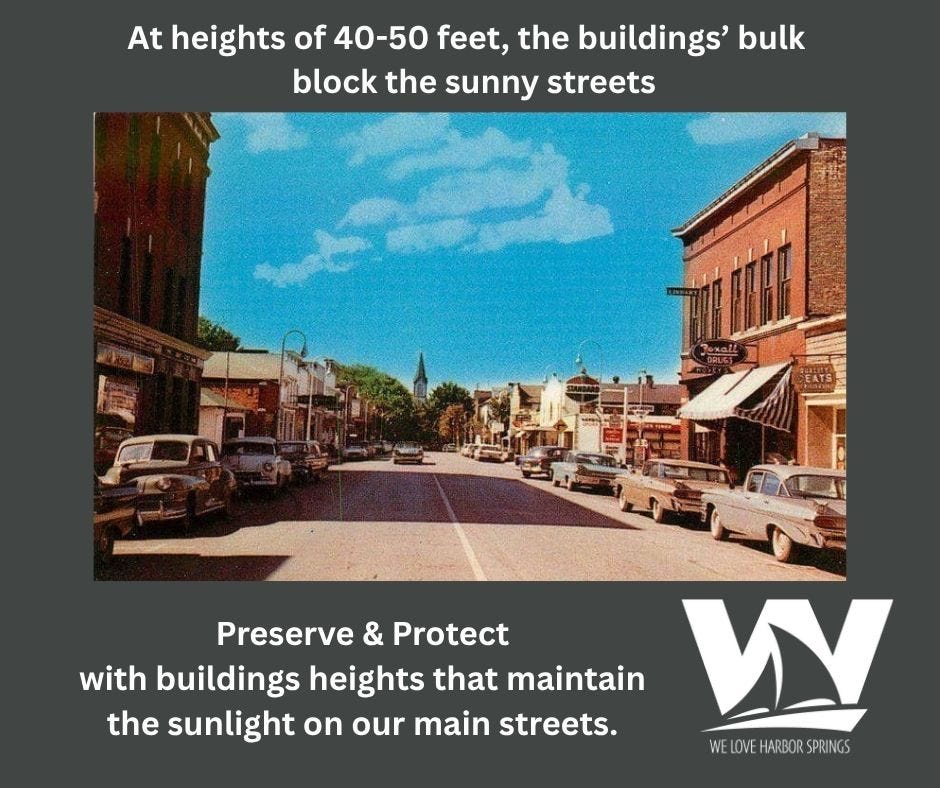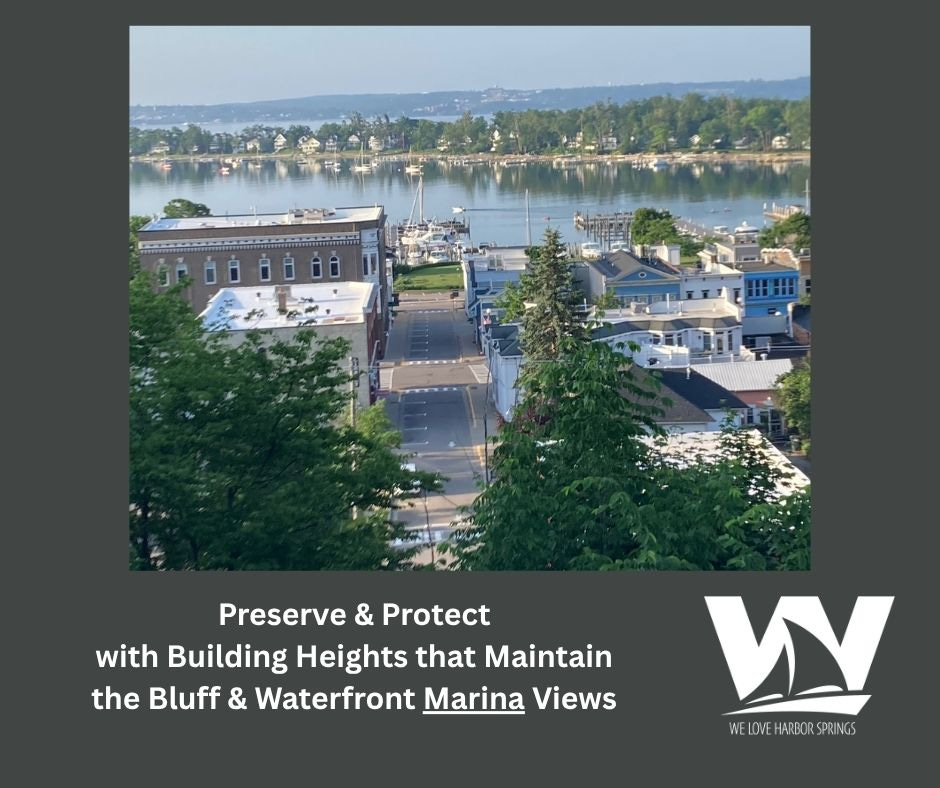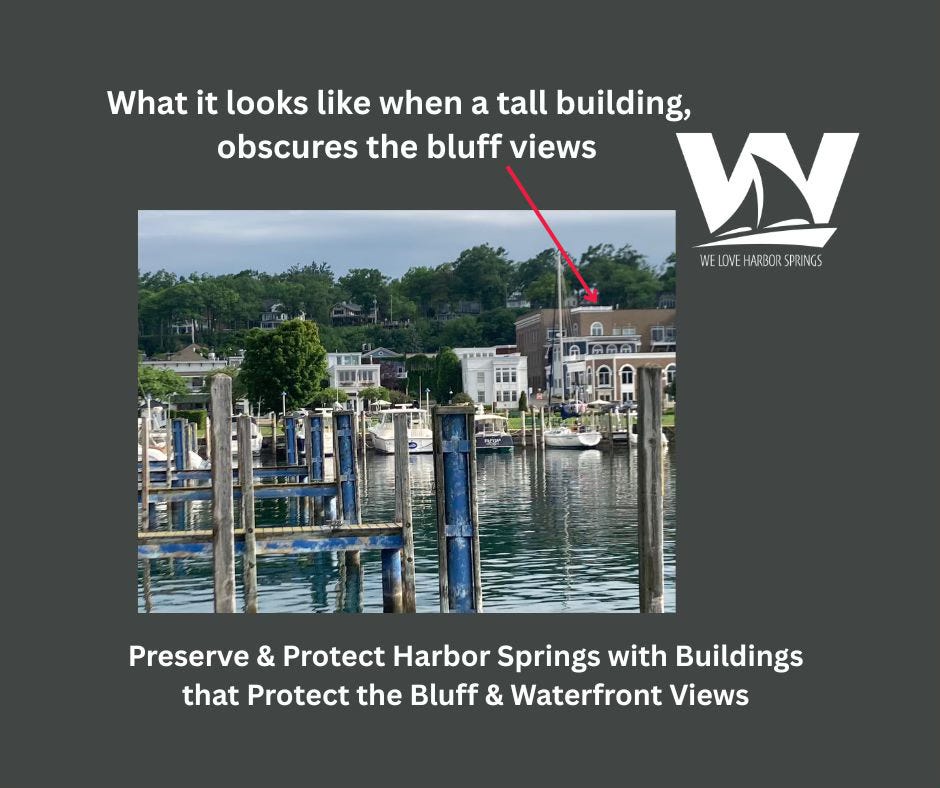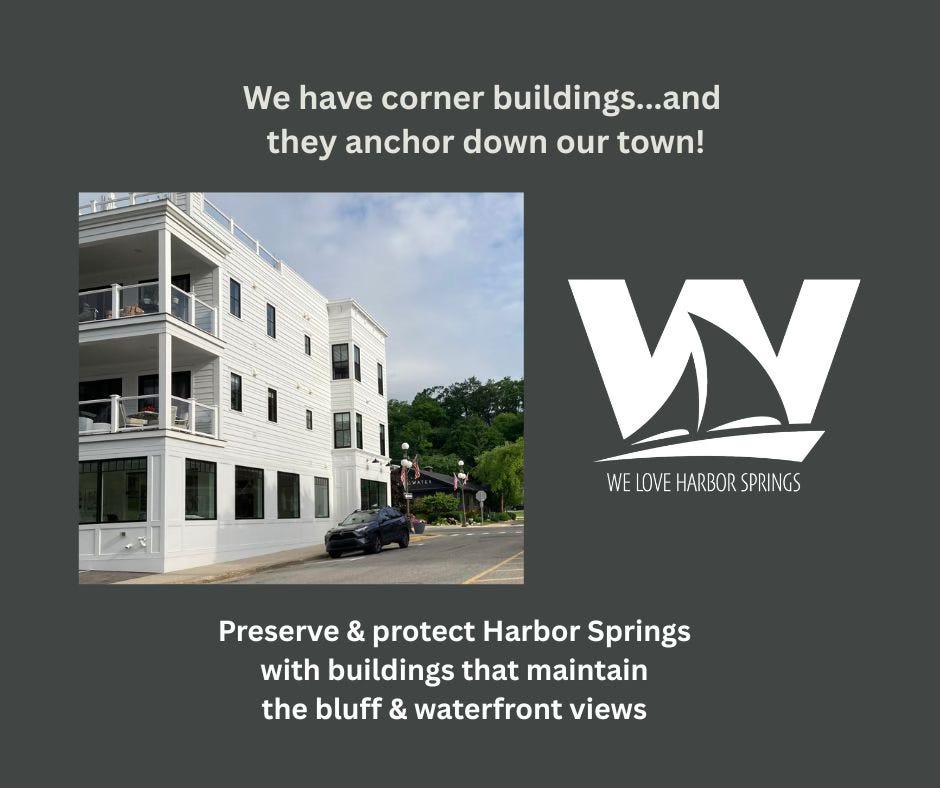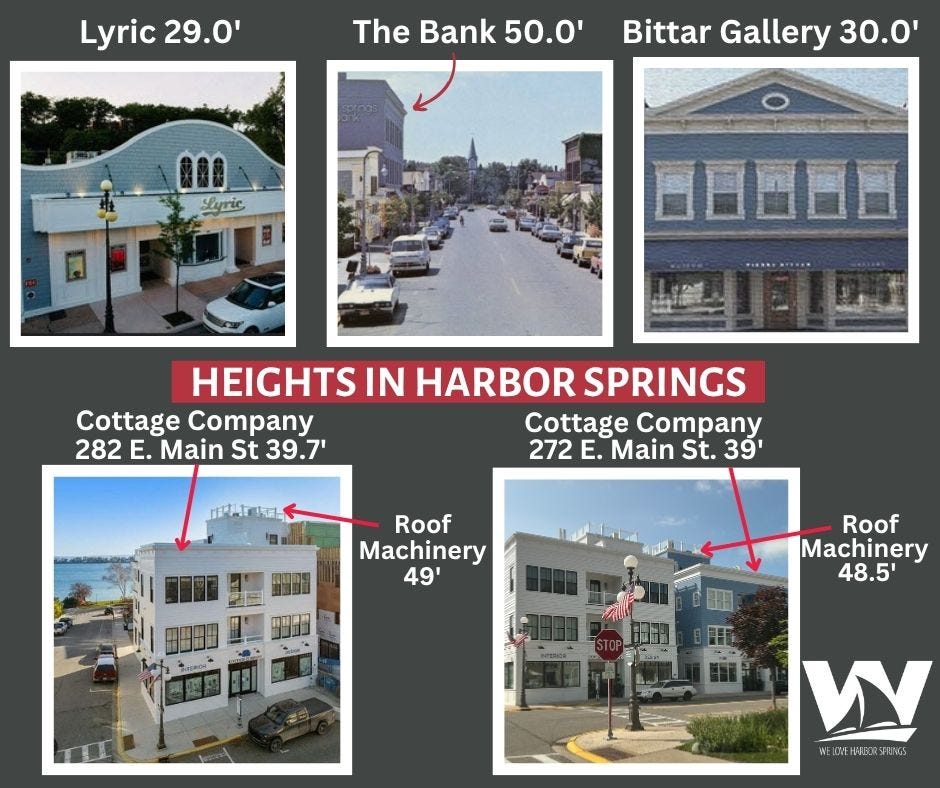Planning with the People, Not for Them
History & Reflections from the July 17, 2025 Planning Commission Meeting
Brief
City Council Meeting Monday, July 21 at 7:00 PM. Zoom YouTube: The City Council is appointing a new Planning Commission member.
The agenda for that meeting can be found here.
Planning Commission: Meets at 5:30 p.m. for a Special Meeting on July 31. Zoom YouTube.
The agenda for the PC meeting can be found here (when available on the City of Harbor Springs website).
We continue to receive feedback that it is difficult to attend meetings via Zoom. WLHS will be reaching out to City Hall to fix this problem. A letter to City Hall is forthcoming.
How to Protect: District by District & Advice on What Needs to be Done:
Before any new drafts or further discussions take place at the Planning Commission meetings on residential districts, the property owners within each District must step up and become the drivers of what happens next.
Here’s how:
Become a neighborhood captain.
Build, sign and circulate petitions amongst neighbors.
Attend Planning Commission meetings—in person or on Zoom.
When you do these things, you send a clear, united message to City Hall. Here are examples we have heard:
Duplexes, multi-unit dwellings, and Planned Developments—even by Special Land Use (SLU)—would fundamentally change the character, appearance, and purpose of our established neighborhoods.
We believe in preserving the single-family character of our residential areas.
To be clear, we are not opposing all housing types in the city. As of now, we understand that there are approximately 100 existing duplexes within the city limits—that’s 200 housing units. The R-2 (Duplex) and RM (Residential Multiple) districts appear likely to remain intact. That means a variety of housing types are already being respected where appropriate.
What’s needed now is district-specific protection in areas where:
Parking is already limited or non-existent.
Quiet backyards are a retreat from growing short-term rentals, increased tourist traffic, or ADU intrusions.
Environmental concerns exist, such as the excavating of sand dunes and adding roads.
Neighbors have said clearly: We do not want duplexes next door.
If you live in one of these neighborhoods, now is the time to get involved. Your voice—and your district’s petition—can help preserve the places we all cherish.
Here’s an example that was submitted by Glenn Drive residents at the last Planning meeting:
Glenn Drive Petition for the R-1-A District
Subject: Petition to Protect the R-1-A Glenn Drive Neighborhoods
We, the undersigned residents and property owners of Harbor Springs, strongly oppose any changes to the 2005 Zoning Code that would allow duplexes, triplexes, multi-family housing, Planned Unit Developments, or hotels in the R-1-A Glenn Drive neighborhoods.
Our key concerns include:
Preserving Neighborhood Character: R-1-A was created to protect low-density, single-family homes. Multi-unit buildings and large developments would fundamentally alter the look, feel, and purpose of our neighborhood.
Infrastructure and Density: Increased housing density will overload existing roads, utilities, parking, and threaten safety.
Property Values and Quality of Life: Residents invested here expecting stable zoning. High-density development would bring more noise, traffic, and crowding—lowering property values and livability.
Environmental Risks: Development could disturb dunes and wetlands, worsen runoff, and reduce open space. An environmental overlay may be needed, but its’ scope is unclear.
We respectfully request:
A zoning amendment to prohibit duplexes, multi-family dwellings, hotels, and Planned Developments by the Special Land Use (SLU) in the R-1-A Glenn Drive neighborhoods.
Guest Quarters to remain allowed only by Special Land Use or, if appropriate, by right.
This petition represents a unified call to protect the character, safety, and future of our R-1-A community.
Zoning Goals: Are We Solving the Right Problems?
Alongside these discussions, the Planning Commission has referred to set of goals that were launched back in 2021 to guide the zoning code update. These include:
Align with the city’s Master Plan
Improve clarity and usability for residents, staff, and professionals
Reduce bureaucratic processes and costs
Provide more options for property owners
Address potentially undesirable outcomes from the current code
Anticipate the future needs of Harbor Springs residents
NEW: Preserve the charm of Harbor Springs and the rights of property owners
But do these goals address the issues Harbor Springs is actually facing?
“Providing more options for property owners” sounds good—but does it help full-time residents trying to stay in town, or mostly benefit developers and second-home investors? For example, how many residents are trying to place a duplex on their property for their family to use or is it for a developer who can get paid for 2 properties instead of just one? Same with building heights.
“Reducing costs and bureaucracy” might make development easier—but does it mean fewer opportunities for neighbors to be notified or provide input?
“Aligning with the Master Plan” only works if the public understands and agrees with that plan in the first place.
Meanwhile, the biggest concerns we hear from residents, include rising housing costs, disappearing long-term housing, and fewer year round jobs and residents. How do these goals address these issues?
The Building Height Debate: A Distraction from Real Needs
At the same meeting, the Commission spent significant time discussing whether to allow three-story buildings downtown.
Some support the idea, like Mark Rondel: “I want to argue for height. Yeah, that improves the intensity of use downtown. It helps to maintain our central business district… It helps to encourage growth and development… It’s a very environmentally friendly way to build up versus out.”
But many residents pushed back, arguing that increased height would erode the character of downtown. “Yesterday we met a developer who owns about eight properties in Harbor Springs and he was very happy that he thought that he could very easily do three-story buildings.”
Garon Gopigian agreed: “Let’s go back to our charter… let’s keep that small town charm… We don’t have parking for a three-story type town on Main Street. We just don’t have it. And it’ll destroy the whole look.”
“You all have seen some of our photographs where the bank building or Mossburg building creates a shade alley down the middle of Main Street.”
So again we ask: who is this for? Residents or Developers?
The public in surveys and sidewalk conversations are not asking for bigger buildings. They want Harbor Springs to grow thoughtfully, without losing the scale and character that make it special. So we have to ask: what full-time resident is tearing down buildings to put up taller ones? If these changes serve investors and developers more than the people who live here, why are they even on the table?
We Deserve a Zoning Process That Reflects Us
Harbor Springs doesn’t need a zoning code written for the people. It needs one written with them.
That means respecting the vote to repeal #439, not treating it as a temporary setback. It means making decisions based on the real needs of the community, not imagined growth scenarios or abstract market pressures. And it means creating a process that centers on full-time residents, the people who are here when the tourists leave and the snow shovels come out.
Process Matters—And So Does Trust
The Planning Commission says it’s starting over after the repeal of Ordinance #439. Yet, the committee is still using documents from the repealed code.
When asked if #439 was still in use, Chair Bill Mulder said: “In the repealed code #439, did the content of that go away? And the answer is yes. And it could go away again if we wanted to.”
WLHS knows that ambiguity undermines confidence in the process. If transparency is the goal, let’s use all the materials designed to help us move forward? The meetings are going well. Let’s finish the discussions while the majority of property owners are in town.




